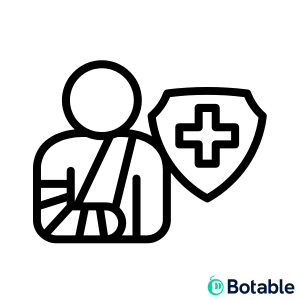Harm
The concept of harm in process risk assessment (such as analysis using FMEA or other risk management tools) refers to the negative consequences or undesirable outcomes that result from a failure or hazardous situation.
In the context of medical device quality systems, harm is typically defined by the severity of the resulting patient injury, illness, or death.
Definition of Harm in Risk Assessment
The foundational international standard for medical device risk management, ISO 14971, defines the relationship between a failure and its consequence as follows:
- Hazard (Potential Source of Harm): A hazard is identified as "a potential source of harm".
- Hazardous Situation (Trigger): A hazard cannot cause harm unless there is a trigger event or events, which is called the hazardous situation.
- Harm (The Outcome): The harm is the resulting consequence of the hazardous situation.
3. For example, bacterial contamination is considered a hazard. If the bacteria is not removed properly (the hazardous situation) before a surgical procedure, the result could be a bacterial infection (the harm).
Risk analysis involves calculating the risk index by considering both the probability of the harm occurring and the severity of the harm.
Specific Categories of Harm (Severity)
In a regulatory environment (such as FDA's 21 CFR), harm is explicitly categorized to determine reporting requirements and the necessity of mandatory recalls:
1. Serious Injury or Adverse Health Consequence
When harm occurs to a person or patient, it is classified as a "serious injury" or "serious adverse health consequence" if it:
- Is life-threatening.
- Results in permanent impairment of a body function or permanent damage to a body structure (excluding trivial impairment or damage).
- Necessitates medical or surgical intervention to preclude permanent impairment of a body function or permanent damage to a body structure.
- In the context of mandatory recall, serious adverse health consequences involve permanent or long-term injuries.
2. Death and Substantial Risk
A manufacturer or user facility must report an event if it suggests that a device has or may have caused or contributed to a death or serious injury.
- If the FDA finds that there is a reasonable probability that the use of a device would cause serious, adverse health consequences or death, it may mandate a recall.
- Remedial action may be necessary to prevent an unreasonable risk of substantial harm to the public health.
3. Sources of Device-Related Harm
In process risk assessment, the cause of the harm may be attributed to a process or product failure, including events occurring as a result of:
- Failure or malfunction of the device.
- Improper or inadequate design or manufacture.
- Labeling or user error.
Finally, while risk management primarily focuses on clinical and product outcomes, implementation of a Quality Management System (QMS) may also encounter non-clinical forms of harm, such as external resistance from stakeholders that could harm existing relationships.
Ready to see what Botable can do for you?
Book your demo now to see how Botable can transform your workplace.
Identify your unique challenges
Flexible pricing options
Easy integrations
Step-by-step implementation plan
Customize Botable for your workflow
Book a demo
.webp)

